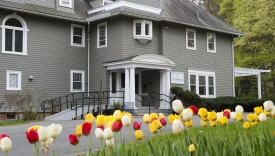Art & the History of Art 135 - Renaissance to Revol.
(Offered as ARHA 135, ARCH 135, and EUST 135) This course, a gateway class for the study of art history, introduces the ways that artists and architects imaginatively invented visual language to interpret the world for contemporary patrons, viewers, and citizens in early modern Europe. Painters, printmakers, sculptors and architects in Italy, France, Spain, Germany and the Netherlands created new ways of seeing empirical phenomena and interpreting them, by means of both ancient and new principles of art, science and philosophy and through powerful engagement with the senses. They produced godlike illusions of nature, from grand frescoes bursting from the walls of papal residences to spectacular gardens covering noble estates in Baroque France and colonializing England. They fundamentally altered the design of major cities such as Rome and Paris so that the visitor encountered an entirely new urban experience than ever before. Along the way, they learned from one another’s example, but, prizing innovation, sought fiercely to surpass previous generations, and argued at length about values in art. They contributed to fashioning an ideal picture of empire and society and conjured the dazzling wealth and power of those who paid them. But as time passed, some came to ironize the social order mightily, and some elevated beggars, farmers, servants, so-called fools, and bourgeois women leading seemingly mundane domestic lives as much as others praised the prosperous few. Finally, artists actively participated in the overthrow of the monarchy during the French Revolution and yet also passionately critiqued the violence of war it engendered. Throughout, the course will investigate how concepts of progress, civilization, the state, religion, race, gender, and the individual came to be defined through art.
The goals of the course are:
• above all, to achieve the skill of close looking to gain visual understanding;
• also, to identify artistic innovations that characterize European art and architecture from the Italian Renaissance to the French Revolution;
• to understand how images are unique forms of expression that help us to understand historical phenomena;
• to situate the works of art historically, by examining the intellectual, political, religious, and social currents that contributed to their creation;
• to read texts about the period critically and analytically.
No previous experience with art or art history is necessary. No requirements.
Unlimited enrollment. Sections uncapped.
Fall 2020-- presence of the instructor:
• Taught in the physical classroom with wall-sized slides as long as possible, so that there is a student community seeing high-quality images in the same shared space at the same time.
• Professor will be virtually present on screen lecturing and leading discussion (synchronous).
• There is also an asynchronous option for remote learning: professor will provide the daily high-quality slide show to upload and will record the classroom experience.
• Class will be repeated for students in different time zones (synchro


